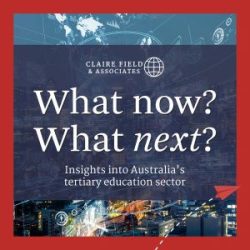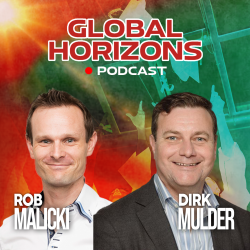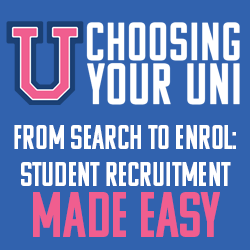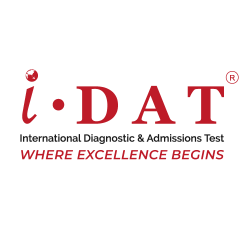In Luigi Pirandello’s 1921 play Six Characters in Search of an Author, a fictional family arrives on stage desperately seeking someone to tell their story. Half written, but without an author to complete their story, they are trapped in fragments of unresolved narrative, and (spoiler alert) the play ends in tragedy.
Today’s international education sector faces a parallel predicament: we’re surrounded by more data than ever before, but our institutional insights, sector trends, and student stories can feel like endlessly wandering characters, lacking a clear and compelling storyline to drive strategic action. This isn’t just a fancy metaphor. International education has a storytelling problem with very real consequences – and if we don’t take ownership of this sector’s stories, others will.
Data in search of a storyline
”Data doesn’t change minds, and facts don’t settle fights” (Erika Hall, designer and author of Just Enough Research)
The international education sector has always had to navigate unpredictable storylines, from financial crises to global pandemics and government policy plot twists that change narratives overnight. Economic and geopolitical turmoil combined with institutional change and relentless pressure to ‘do more with less’ means we need to become far more effective advocates for our students, our teams, our institutions, and the sector as a whole.
Building our data and evidence base is a good foundation for action and advocacy, but it’s not enough. The abundance of neat little dashboards sparkling across our screens does not automatically produce better decision-making, and even when the data is good quality, valuable information gets stuck with a small set of stakeholders who lack either the time or ability to translate it into actionable insights. If you find yourself staring at a research report and asking, “so what?”, there’s a good chance the narrative has gone missing somewhere along the (story)line.
Data doesn’t tell stories by itself – it requires interpretation, context, and connection to human experience. Experienced researchers will tell you this ‘storyfinding’ is rarely a solo sport; if you’re staring at graphs, tables, or transcripts expecting key points to leap off the page, you’ll be waiting a long time. So talk it through, compare it to your strategic plans, look at it through the lens of a student, a parent, a teacher, front-line and back-office staff; find patterns and edge cases, and build your story around what you see. It’s there, you just need to listen.
Insights in search of an audience
“The whole point of gathering evidence is to make evidence-based decisions. If that evidence undermines or contradicts the ideas or beliefs of the person with authority to make decisions, they will find reasons to reject it or ignore it.” (Erika Hall, The 9 Rules of Design Research)
Stories need an audience, and knowing your audience means you can craft a story that will be heard, not just broadcast. Effective storytelling is built on genuine interest in the perspectives of your colleagues and stakeholders so you can meet them where they are, with the right version of your story. Whilst your commercial director listens with one perspective, your academic discipline experts and teaching staff bring a different set of assumptions and needs; likewise, a compliance-driven government department almost certainly doesn’t want the same debrief deck as your creative-thinking student support team.
Finding the right moment to tell your story is as important as the format of your narrative. That moment might be a verbal briefing over coffee or formal papers submitted to an academic board meeting; your story might be needed the day before you’re ready to tell it, or 6 months after you finished your report. If it’s worth sharing, it’s worth hanging onto until your audience is ready to hear it.
A sector in search of sustainable narratives
“The drama is in us, and we are the drama. We are impatient to play it. Our inner passion drives us on to this.” (Six Characters in Search of an Author, Pirandello)
Everyone loves a good story, but even the best narratives can go off-script. Entrenched institutional myths and misunderstandings might simmer quietly for a while, but left unchecked can become counter-narratives that quickly undermine your careful research – even if they have little or no evidence of their own (international students and the housing crisis, anyone?). If we listen carefully, we can try to understand where these ‘truths’ have come from, and how we might slowly but surely introduce a different thread in the story to move the narrative forward.
When your stories come back to you, that’s when you know your hard work is paying off. Confident in your evidence and messaging, you’ve seeded the story early and nurtured it carefully, involving the right people at different levels through layers of meetings, presentations and well-timed conversations. Eventually, someone quotes your own insights back to you word for word, as though they were a work of classic literature – congratulations, you’re now an author!
But before you take a bow and put away your pen/keyboard, remember that whilst you might feel like you’ve given the same presentation a hundred times, this is not a one-night only performance. Tomorrow brings new stakeholders with new assumptions and perspectives; sustaining insight-driven change means telling that story again and again, for as long as people need to hear it.
This blog is inspired by a shared panel session called What’s your story? Shifting our data narratives from analysis to insight-driven action, which takes place on Thursday 16 October at the AIEC annual conference in Canberra.
The scene has been set and our sector’s most important stories are waiting to be told. Will you be one of its authors?
















